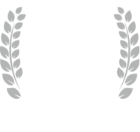| Chair | Doranne M. Donesky, PhD, ANP-BC, ATSF | Napa, CA |
| Vice Chair | Catherine Chen, MD, MS | Dallas, TX |
| Committee Member | A. Cole Burks, MD | Chapel Hill, NC |
| Committee Member | Abdullah Alismail, PhD, RRT, FCCP, ATSF | Loma Linda, CA |
| Committee Member - PAR Representative | Joyce A. Kullman, BS | Kansas City, MO |
| Committee Member | Kaharu Sumino, MD, MPH, ATSF | Saint Louis, MO |
| Committee Member | Manvi Bansal, MD | Los Angeles, CA |
| Committee Member | Matthew S. Wong, DO, MPH | VALLEY VILLAGE, CA |
| Committee Member - PAR Representative | Paula Blonski | Elgin, IL |
| Committee Member | Priscilla De La Cruz, MD | Albuquerque, NM |
| Committee Member - CCR Representative | Robin L. Gross, MD | Washington, DC |
| Committee Member | Sairam Parthasarathy, MD | Tucson, AZ |
| Committee Member | Suzanne C. Lareau, RN, MS, ATSF | Midway, UT |
| Committee Member | Timothy Amass, MD, MSci | Denver, CO |
| Observer - Ad-hoc Expert | Marianna M. Sockrider, MD, DrPH, ATSF | Houston, TX |
| Staff | Judy Corn | New York, NY |
The Patient and Family Education Committee (PFEC) provides oversight for the design, implementation, and evaluation of the Society’s patient, family and lay public‐oriented educational activities and products, including informational brochures and website materials.
The Committee performs ongoing assessments of ATS patient/public educational resources to assure that they are relevant, current, health literate, and cost‐effective. Based on these assessments, the Committee oversees the periodic development and modification of the Society's educational portfolio for patients and families and conducts periodic strategic planning aimed at continued improvement. It develops educational strategies to accelerate the translation of scientific discovery and knowledge to improve patient and family knowledge and skill about the prevention and treatment of pulmonary disease, critical illness, and sleep disorders. PFEC focuses on areas that improve clinician knowledge and attitudes for enhancing communication with patients and families, including topics such as health literacy, cultural competence, and use of patient and family educational materials in clinical practice. In addition, the Committee also explores ways to ensure that the patient and family perspective is incorporated into educational activities for ATS members and other professionals in the fields of pulmonary, critical care and sleep.
The committee works closely with the Public Advisory Roundtable (PAR) to develop collaborative goals regarding patient and family education. It coordinates its efforts, whenever appropriate, with multiple other committees and staff including the Steering Committee on Advancement and Learning (SCALe), Documents Development and Implementation Committee (DDIC), Drug/Device Discovery and Development Committee (DDDD), Health Equity and Diversity Committee, the Associate Medical Editor for Patient Education, and the ATS Website team.
The committee provides expert guidance to existing and future public health initiatives to ensure their development, review and output is accurate, consistent with current public health and patient/family education standards, and coordinated with relevant outside organizations or teams.
Benchmarks, 2024-2025:
▪ Serve as a resource for ATS participation in the CDC/CMSS grant program to “Improve Adult Immunization Rates for High-Risk Adults,” including providing expertise, as requested by the Expert Panel, in the design, review and use of patient-centered educational materials aimed at pulmonary clinicians and their patients.
▪ Continue to serve as a resource for the 2024-2025 ATS website review process by providing peer review and content expertise (accuracy, currency, relevancy, literacy) of medically oriented pages targeted for patients, families, and the public.
▪ Finalize, facilitate awareness of and disseminate the new 2024 Patient Education Manual to Assemblies, Committees and other stakeholders; the Manual has been fully updated and includes current guidance on development, review, publication (ARJCCM, ATS Scholar) and dissemination (ATS Website and social media) of high-quality patient/family education materials, a check list for authors and reviewers (appendix 1), and extensive health-literacy tips (appendix 2).
▪ Coordinate with assemblies/committees to develop new and update existing patient education materials and expand upon successful collaboration with PAR to establish a working group to explore opportunities to highlight PAR patient education. Consider using ARDS as a case study.
▪ Implement and adjust, as needed, the new standardized process for authors to report on the development and evaluation processes for patient education materials.
▪ Develop a sustainable and effective strategy to utilize social media to promote educational materials for patients and families.



